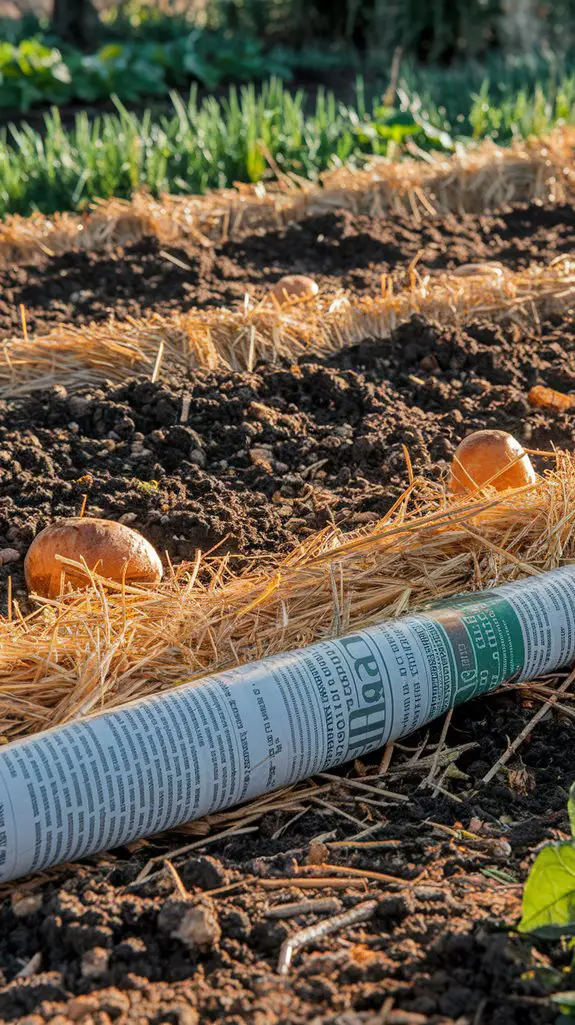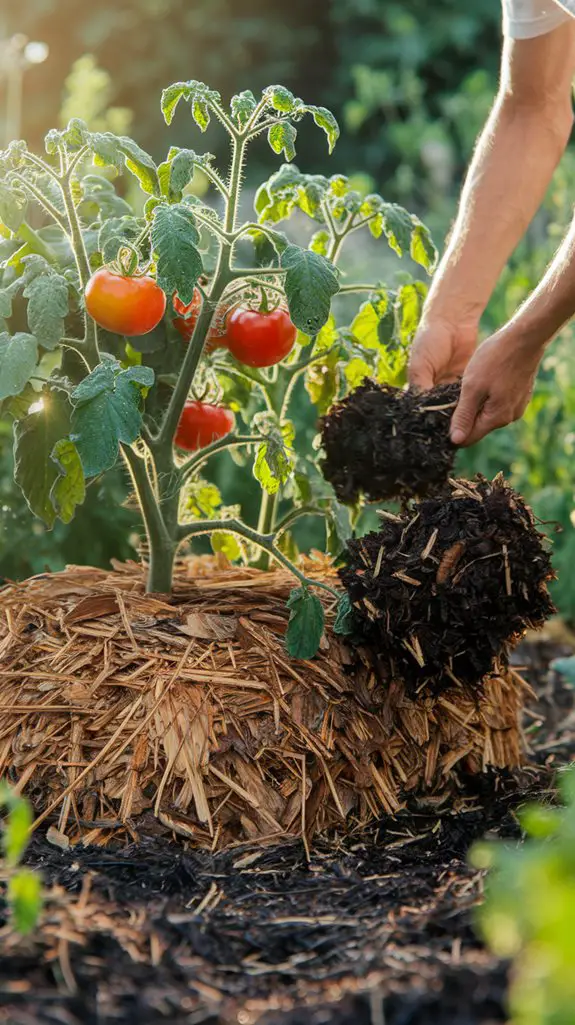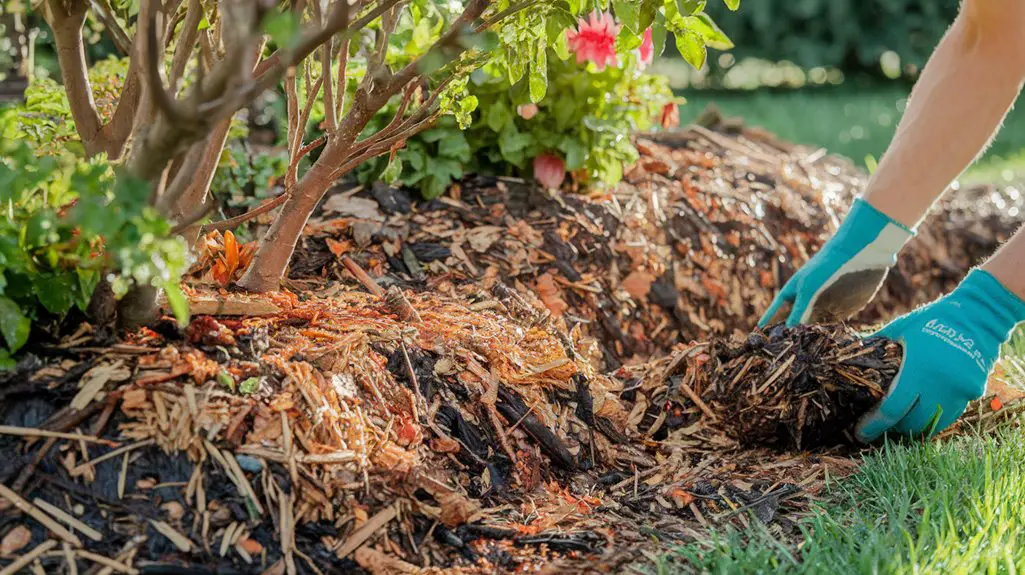You've noticed your garden soil lacks energy, compacts easily, or dries out too quickly—all signs of poor soil health. Mulching offers a science-backed solution that transforms struggling soil into a thriving ecosystem. By selecting the right materials and applying proper techniques, you'll create an environment where beneficial microorganisms flourish, erosion diminishes, and plants access nutrients more effectively. The impact extends beyond immediate benefits, with each mulching method offering distinct advantages for specific garden challenges.
Understanding Different Mulch Materials and Their Benefits
Gardeners face a multitude of choices when selecting mulch materials for their landscape needs.
Organic options like wood chips decompose slowly, contributing carbon while improving soil structure. Straw mulch offers excellent moisture retention but breaks down rapidly, requiring frequent replenishment. Leaf mulch, rich in trace minerals, supports microbial activity and earthworm populations.
Inorganic alternatives provide distinct advantages. Landscape fabric blocks weed growth while allowing water penetration. Gravel and stone mulches offer permanence and heat retention for xeriscaping applications. Rubber mulch, made from recycled tires, resists compaction and doesn't attract pests.
Your selection should align with specific garden objectives, soil conditions, and regional climate factors. Additionally, using eco-friendly mulch options can further enhance sustainability in your gardening practices.
Each material affects soil pH, nitrogen availability, and moisture dynamics differently, making proper selection essential for ideal plant health.
Sheet Mulching: Building Fertile Soil Layers

While traditional mulching involves placing a single material around plants, sheet mulching creates a multi-layered soil ecosystem that mimics natural forest floor development. This technique, also known as lasagna gardening, begins with a weed barrier of cardboard or newspaper that suppresses existing vegetation while decomposing.
Layer biodegradable materials systematically: first nitrogen-rich components (manure, kitchen scraps, green waste) followed by carbon-rich materials (straw, dried leaves, wood chips).
Maintain a carbon-to-nitrogen ratio of approximately 30:1 for ideal microbial activity. Each layer should be 2-4 inches thick.
Water thoroughly between layers to activate decomposition processes.
The completed sheet mulch system creates habitat for beneficial organisms, prevents erosion, retains moisture, and gradually releases nutrients as materials break down, resulting in humus-rich soil within 6-12 months. Additionally, using organic gardening practices can further enhance the effectiveness of your sheet mulching efforts.
Strategic Mulch Application Timing for Maximum Results

Applying mulch at ideal times throughout the growing season greatly enhances its effectiveness for soil health and plant productivity.
Synchronizing application with plant growth cycles and seasonal changes optimizes nutrient cycling and moisture retention.
- Apply organic mulches in early spring after soil has warmed to 55°F to prevent delayed warming.
- Refresh mulch layers in late spring (1-2 inches) when soil moisture begins to decline.
- Apply heavier mulch (3-4 inches) during summer heat peaks to reduce irrigation needs by 25-50%.
- Reduce mulch depth to 1 inch near plant stems in fall to minimize pest habitat.
- Apply winter mulch after first hard frost to regulate soil temperature fluctuations.
Adjust timing based on your climate zone, precipitation patterns, and specific crop requirements for maximum soil protection and enhancement.
Combining Mulch With Compost for Enhanced Soil Biology
The strategic integration of compost with mulch creates a symbiotic relationship that dramatically enhances soil biological activity beyond what either material can achieve alone. When you layer compost beneath mulch, you're establishing a nutrient-rich environment that accelerates decomposition while maintaining ideal moisture levels. Additionally, this practice contributes to sustainable garden maintenance, ensuring that your garden thrives without depleting the ecosystem.
| Component | Function | Microbial Impact | Application Rate |
|---|---|---|---|
| Finished Compost | Nutrient delivery | High bacterial activity | 1-2" layer |
| Leaf Mold | Water retention | Fungal development | 2-3" layer |
| Wood Chips | Slow-release carbon | Fungal dominance | 3-4" layer |
| Compost Tea | Microbial inoculant | Rapid colonization | 1 gal/10 sq.ft. |
You'll achieve peak results by applying compost directly to soil first, followed by a protective mulch layer. This stratification creates distinct ecological zones supporting diverse microorganism communities that enhance nutrient cycling efficiency and soil structure development.
Troubleshooting Common Mulching Problems in Home Gardens
Despite careful application, even experienced gardeners encounter challenges with mulch that can undermine its benefits and potentially harm plants.
When symptoms emerge, diagnose promptly and implement corrective measures to restore mulch functionality.
- Nitrogen depletion occurs when wood-based mulches decompose, requiring supplementation with nitrogen-rich fertilizer (0.5-1 lb N/1000 sq ft).
- Fungal growth indicates excessive moisture retention—reduce mulch depth to 2-3 inches and improve air circulation.
- Pest infestations develop when mulch directly contacts plant stems—maintain a 2-inch buffer zone around stems.
- Matting/water repellency in fine-textured mulches requires breaking up compacted layers with a garden fork.
- Alkalinity problems from fresh wood chips can be neutralized by pre-aging mulch for 3-6 months before application.
Additionally, using raised garden beds can help mitigate some of these issues by improving drainage and soil aeration.
Conclusion
By implementing these research-based mulching techniques, you'll establish a self-sustaining soil ecosystem that enhances plant productivity while reducing maintenance requirements. In a controlled study at Michigan State University's horticulture plots, raised beds using 3-inch wood chip mulch with compost incorporation showed 47% higher soil organic matter and 32% greater moisture retention compared to unmulched controls after one growing season, demonstrating mulching's quantifiable soil health benefits.




